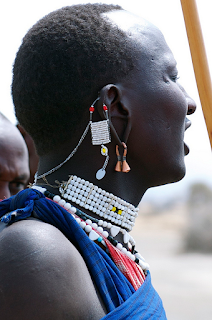Stretching Earlobes from Africa to America
The tradition of elongating earlobes has stretched from Africa to America. In the African Maasai tribe the slow and steady method of stretching earlobes is the method used.
Stretching Earlobes from Africa to America
Ear piercing and the stretching of earlobes are the first stage of initiation towards adulthood in traditional African Maasai (Masai if you live in Tanzania) culture.Piercing and stretching earlobes are considered beautiful to most Maasai. Women and men are initiated during the Eudoto-oo-inkiyiaa cartilage and Enkigerunoto-oo-inkiyiaa earlobe stretching ceremonies.
Ear stretching and ear cartilage piercing with 1, 2, 3, 4, 5 and up piercings are common. Ear piercing kits, expanders, stretchers and even tips on perfectly stretching your ears are sold online; ear art heritage has literally stretched from Africa to America.
Hopefully, the traditional culture and customs of the Maasai are not limited to working in African tourism where they display their culture to visiting tourists. Maasai traditions have undergone some changes in the past few decades; their strong social traditions remain intact.
 |
| Beautiful Kenyan woman with stretched earlobes |
There are three major ways to stretch ear lobes, gradually, scalpelling and using weights
A dermal punch or a biopsy punch is a large gauge-piercing needle used to remove a circle of skin or tissue usually on a cartilage part of the ear. Scalpelling is performed by using a scalpel to cut a slit into the skin, and flesh is removed. Both procedures can cause thin lobes. The larger and heavier the earplug will cause the ear lobe to stretch further.
 |
| Using ear weights stretches the ear lobe |



